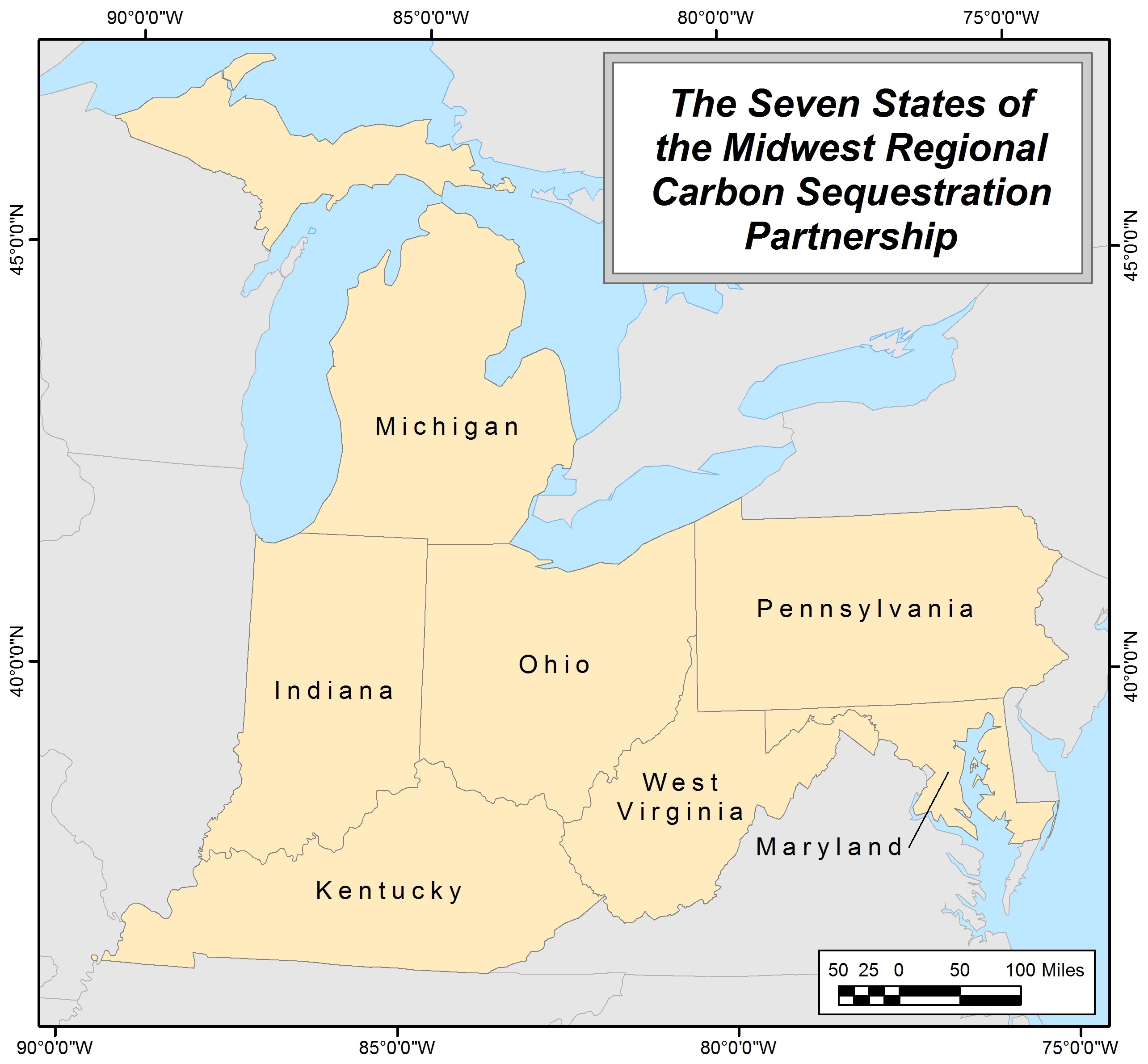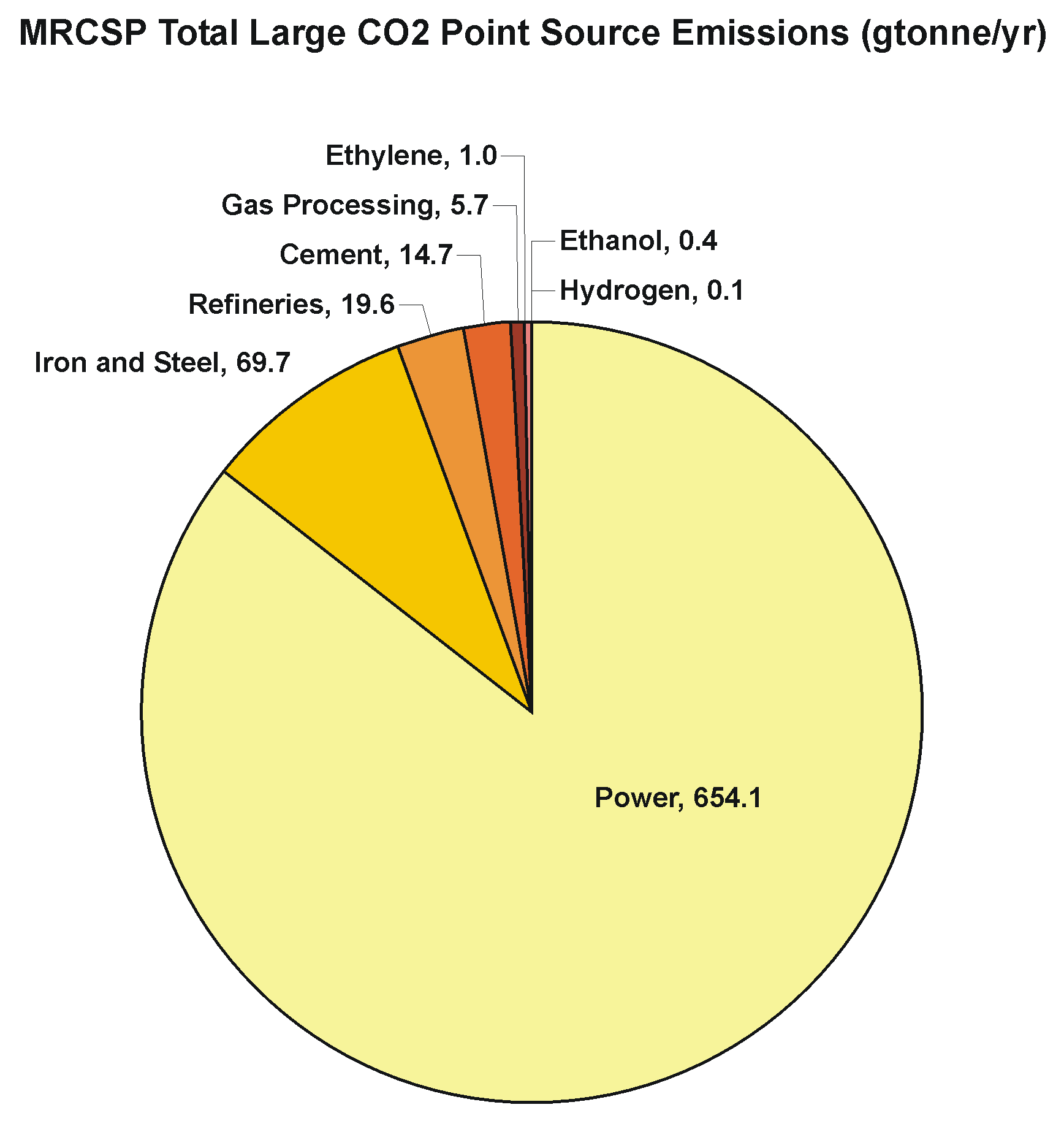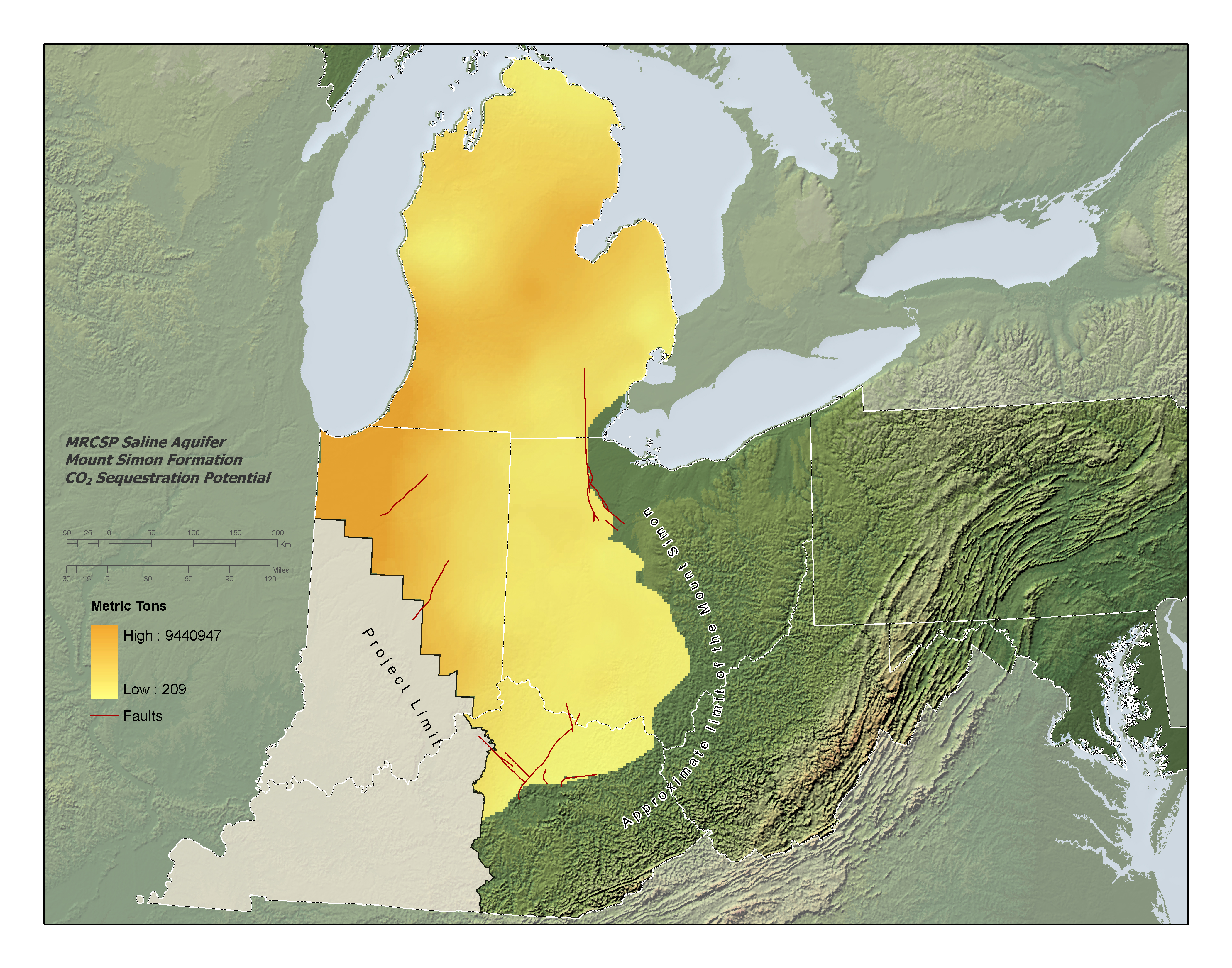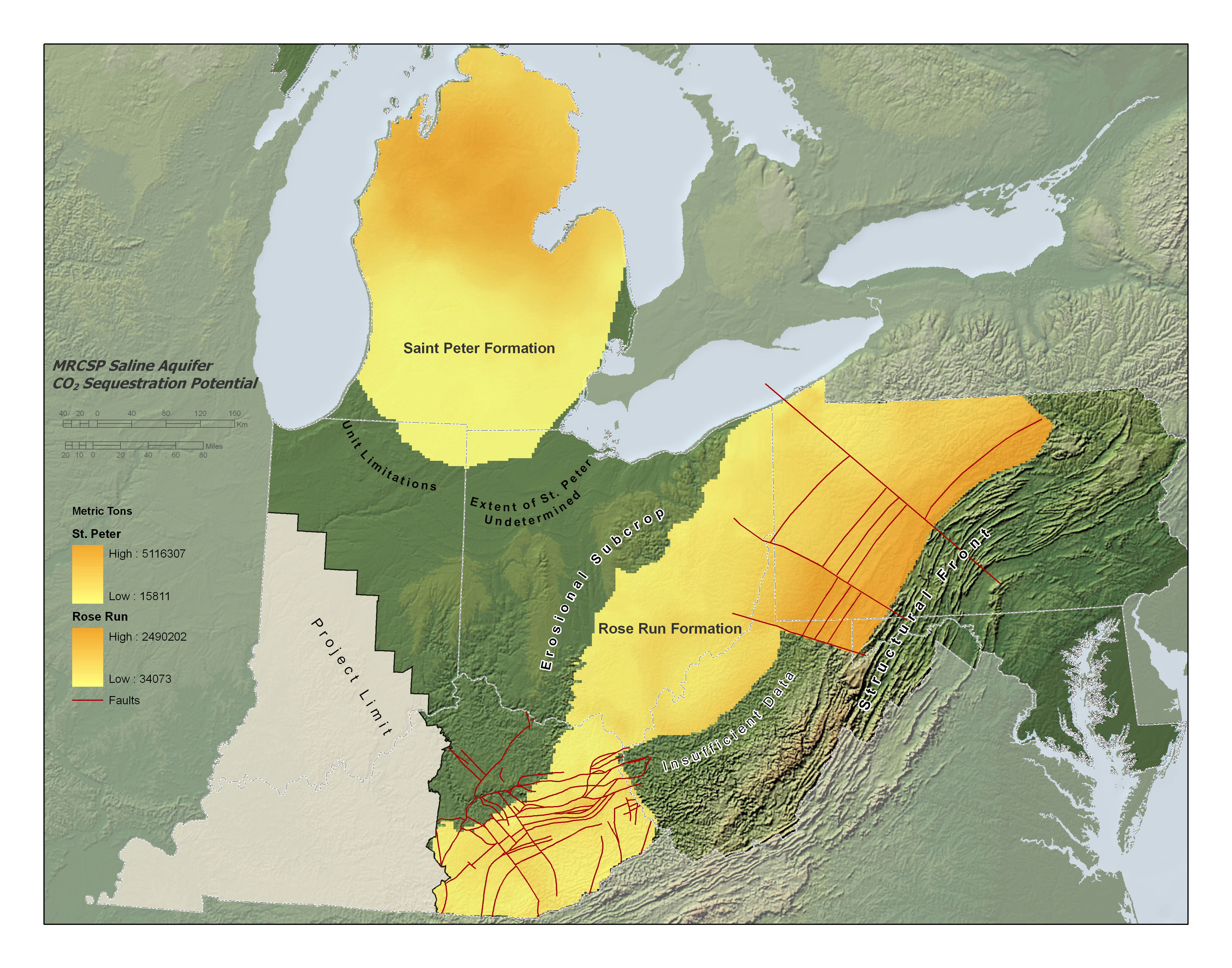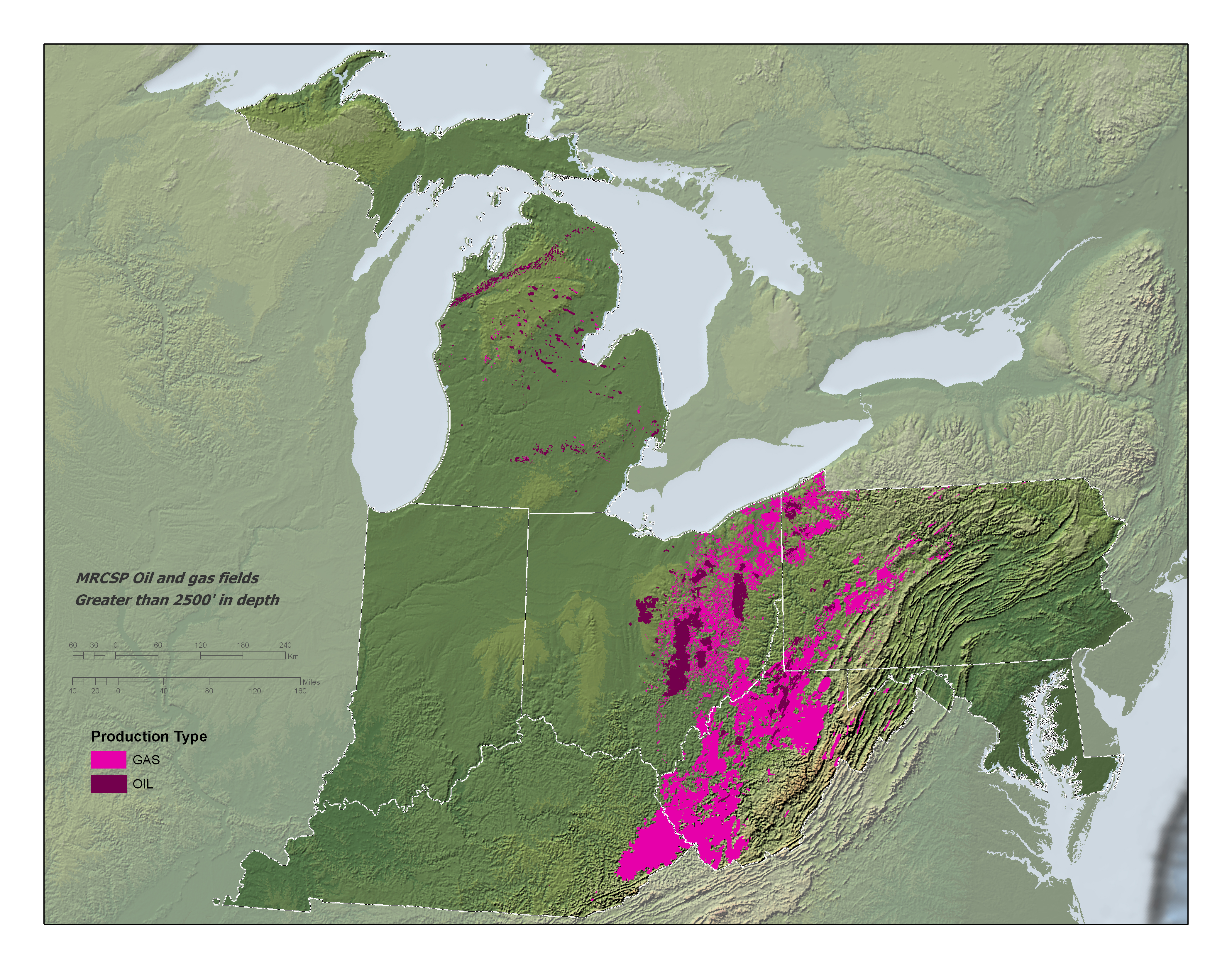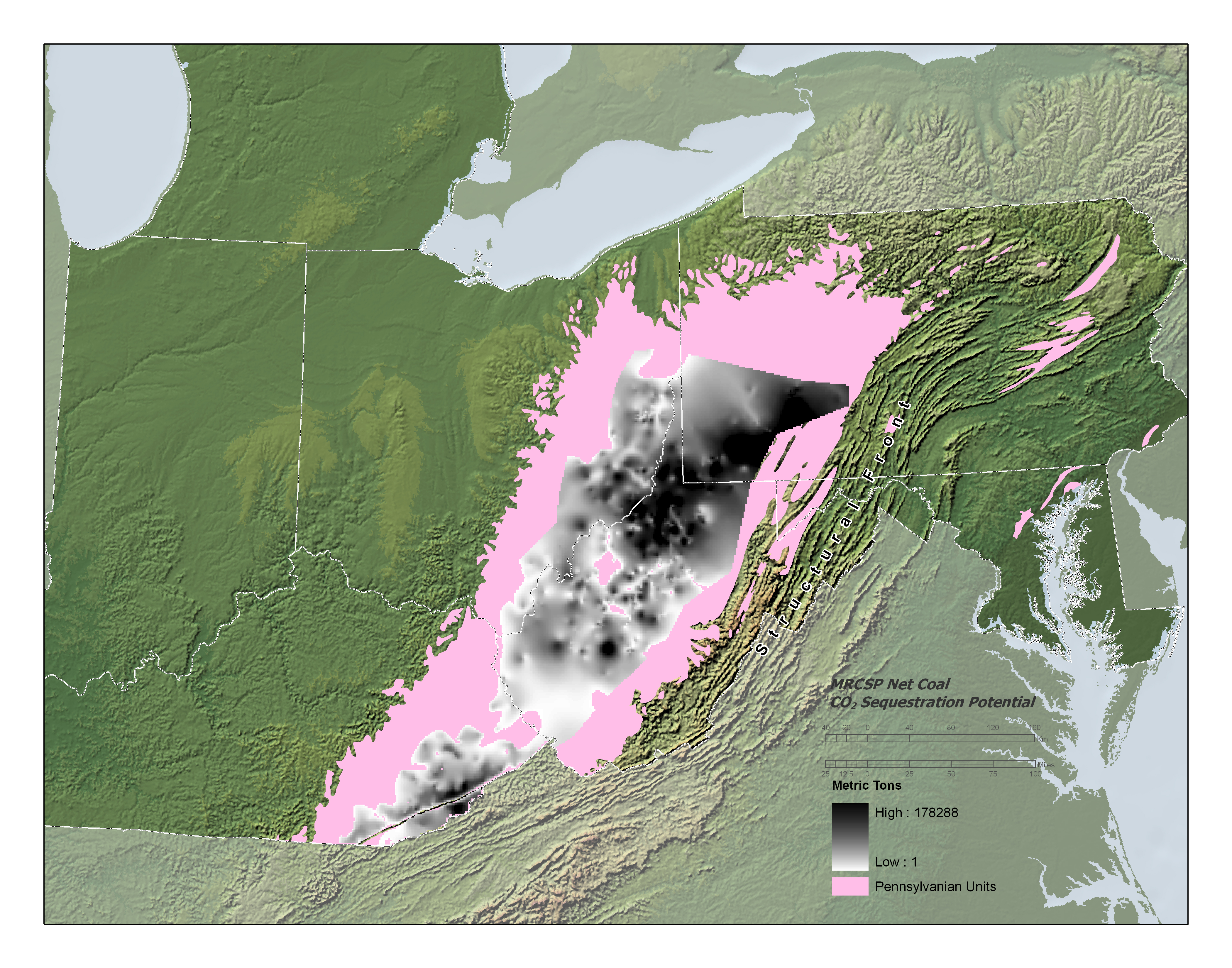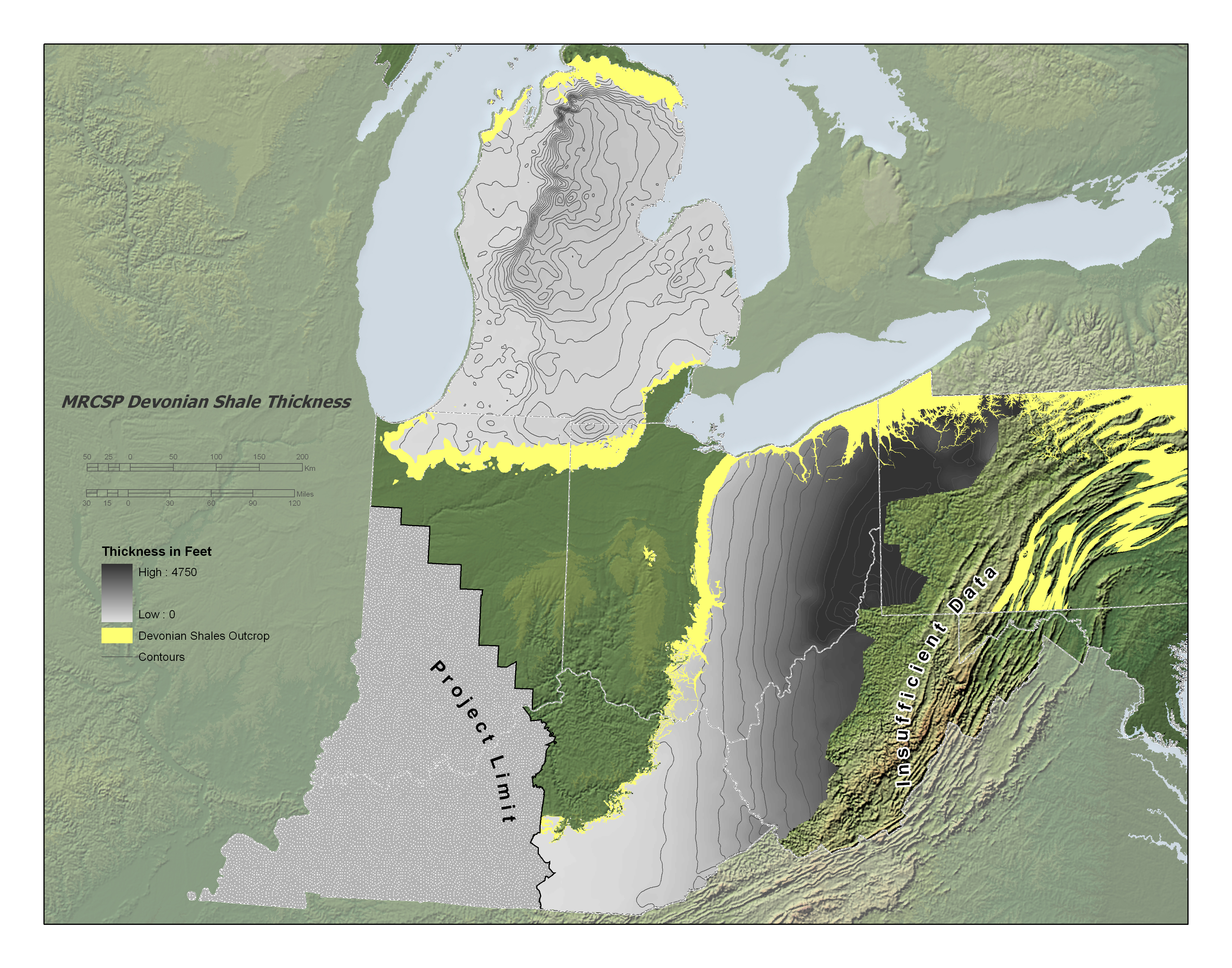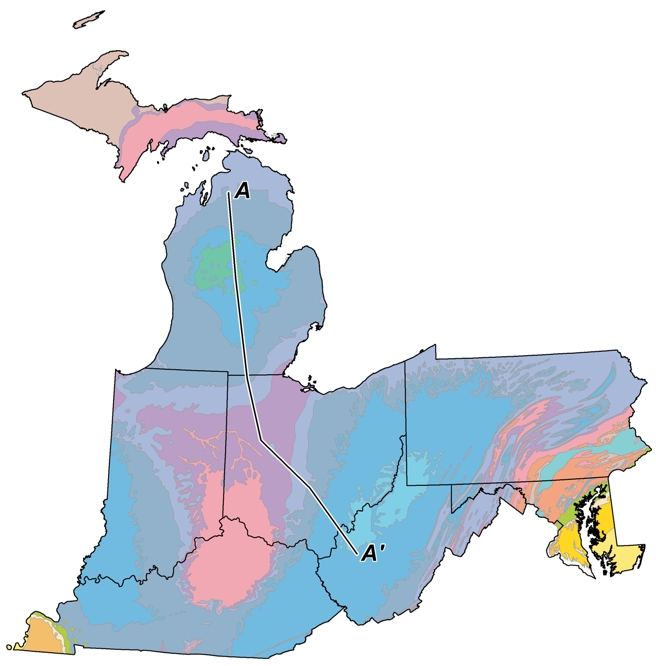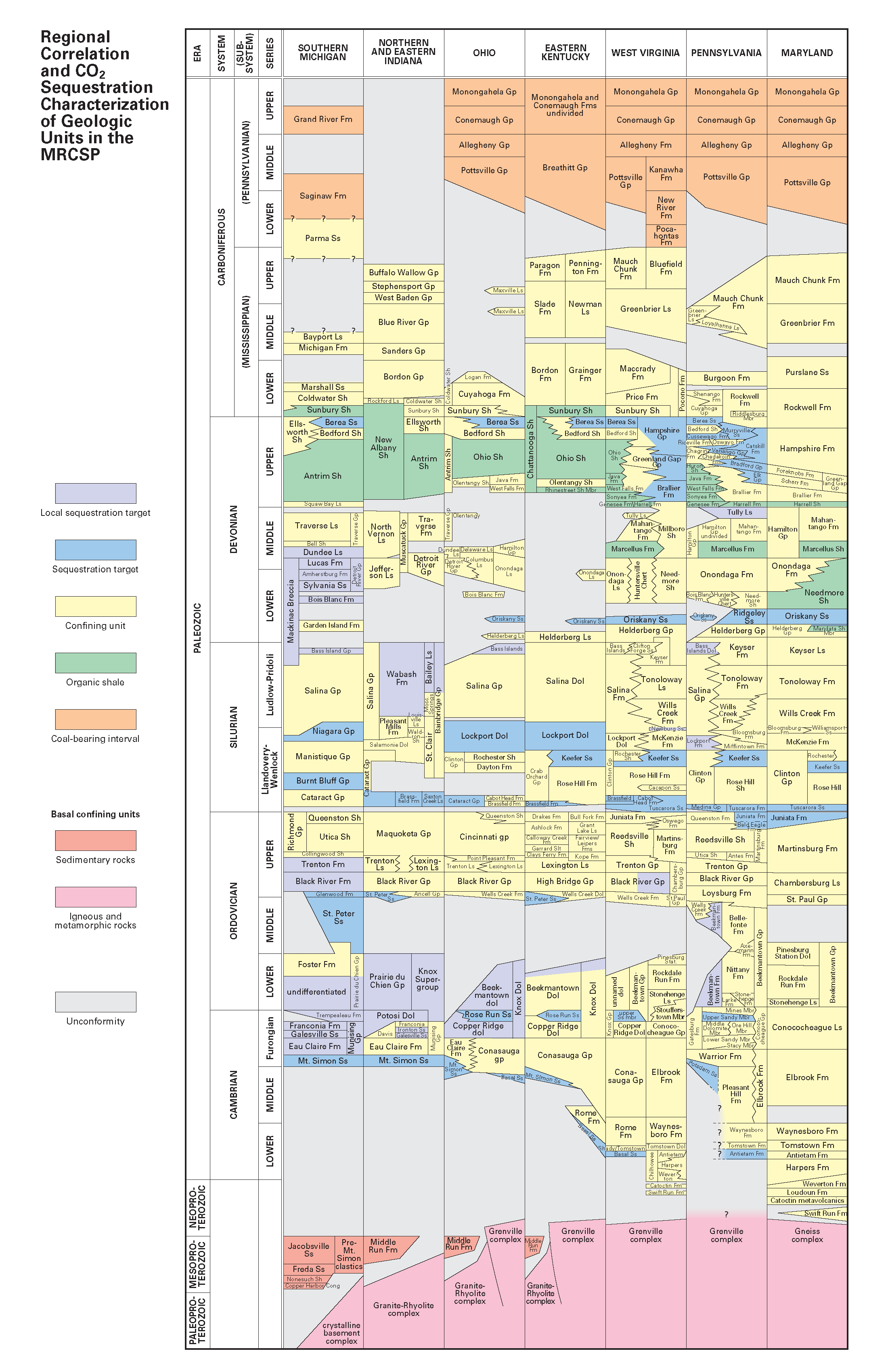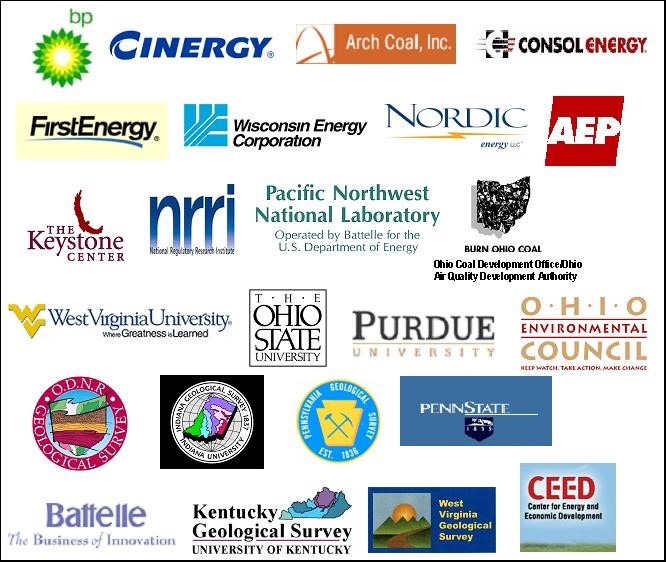Carbon Storage Atlas
Phase I Overview
The Midwest Regional Carbon Sequestration Partnership (MRCSP) was formed to assess the technical potential, economic viability, and public acceptability of carbon storage within its region. The MRCSP Phase I region consisted of seven contiguous states: Indiana, Kentucky, Maryland, Michigan, Ohio, Pennsylvania, and West Virginia.
The region has a diverse range of carbon dioxide (CO2) sources, totaling approximately 782 million metric tons of CO2 per year (as of 2003), with the power plants being the largest contributors.
The region also has many opportunities for geologic and terrestrial storage in deep rock formations associated with broad sedimentary basins and arches. The Michigan and Appalachian Basins have extensive histories of oil and gas production, which allows for additional CO2 storage resource. The region also represented 7% of the total U.S. land mass and 18% of the total U.S. population, with a strong economy and industrial backbone. Together, these key elements created a prime location for promoting carbon capture and storage (CCS).
Story of Interest
The early phases of the Midwest Regional Carbon Sequestration Partnership (MRCSP) Phase I project brought together a team of seven states for the first time and aimed to reduce carbon dioxide (CO2) emissions while simultaneously protecting the industrial infrastructure of the Midwest region’s economy. At the time, we thought that “Never before has a research team with such depth and breadth of skills and major industrial firms been assembled to advance key energy and climate management technologies such as carbon storage.” It was exciting times, with great interest in new power generation, carbon trading, and policies to reduce CO2 emissions. Engaging and educating industrial partners was an important aspect of MRCSP’s Phase I efforts, and translating the theoretical knowledge on carbon storage into practical implementation was an early hallmark of the MRCSP. During early team discussions, the partnership identified topics that might be concerning to the public and political perspective, such as climate policy, carbon taxes, and the overall “newness” of the concept of carbon capture and storage (CCS) to the region.
Lessons Learned
The formation of the Midwest Regional Carbon Sequestration Partnership (MRCSP) seven-state team was the first time seven states worked collectively on a project, and this resulted in significant technical accomplishments and relationships. The team had to share valuable data and have effective communications to produce the carbon capture and storage (CCS) evaluations that transcended state boundaries and resulted in 30 original depth and thickness maps, 9 regional thematic maps, and 14 capacity maps using more than 85,000 control points. The highlights of the major accomplishments and lessons learned are summarized below for each area of focus.
Geologic Storage Potential
- The geologic characterization efforts focused on four reservoir classes: deep saline formations, oil and gas fields, unmineable coalbeds, and organic shales.
- The Mt. Simon, St. Peter, and Rose Run sandstones were identified as the region’s largest assets for long-term CO2 storage (Figure 4 and Figure 5).
- Deep saline storage could potentially store 450 to 500 billion metric tons of CO2.
- Oil and gas fields were estimated to have at least 2.5 billion metric tons of CO2 storage potential, not including the increased storage potential that could result from enhanced oil recovery using CO2 (Figure 6).
- The unmineable coalbeds could potentially store .25 billion metric tons of CO2 with the possibility to increase storage potential through enhanced coalbed methane recovery (Figure 7).
- Organic shales could potentially store as much as 45 billion metric tons of CO2, but the research was in the laboratory phase during this time (Figure 8).
CO2 Source Evaluation
The MRCSP region included a large variety of sources of greenhouse gases, including agriculture, transportation, heating, and power. A database was compiled to summarize major CO2 emitters in the regional and their relationship with potential storage locations.
- 66% of CO2 emissions were stationary point sources that annually emitted 776 million metric tons of CO2.
- Emissions were highest along the Ohio River Valley and coastlines where many power plants and industries were located.
- 85% of the point source emissions were electrical power plants that accounted for 654 million metric tons of CO2 per year.
- Only a few tens of miles of dedicated CO2 pipelines were identified within the MRCSP region in Northern Michigan.
Regulatory Framework
During Phase I, there were no permits for geologic storage of CO2 within the MRCSP region and the Underground Injection Control (UIC) Class VI well did not exist. The project was limited to discussions with regulatory parties and potentially using UIC Class I or Class V to meet specific needs for an injection program.
Stakeholder Engagement
During Phase I, key stakeholders had limited awareness of carbon storage and the potential role it could have within the MRCSP region. The project stakeholder outreach and education tasks aimed to increase awareness and understanding.
Geologic Details
The Midwest Regional Carbon Sequestration Partnership (MRCSP) region covers an area with complex, variable geology, which encompasses the Michigan Sedimentary Basin, Arches, and Appalachian Sedimentary Basin. Multiple stratigraphic units with efficient depth, thickness, and reservoir quality exists in the Michigan Basin, which thins above the structural arches and thickens again across the Appalachian Basin (Figure 9). Geologic formations include a range of lithologies (sandstone, carbonates, and shales) and depositional environments that can change when crossing state boundaries and/or geologic provinces (Figure 10). Of these formations, the most recognized are the Mt. Simon sandstone, St. Peter sandstone, and Rose Run sandstone. The Mt. Simon sandstone is the most basal sandstone overlying the Precambrian basement rock and was deposited in a nearshore environment; the Rose Run sandstone was deposited in a shallow marine shelf environment during the upper Cambrian to lower Ordovician time period; and the St. Peter sandstone was deposited during the middle Ordovician in multiple tidal environments. Carbonate formations, such as Trenton (Figure 11) and Trempealeau, also offer significant storage potential in the presence of matrix and vugular porosity.
Links to EDX
- Report on geologic storage in the Midwest Regional Carbon Sequestration Partnership (MRCSP) region from October 2003 through September 2005, addressing geography and geology, mapping procedures, data sources, methodology, oil, gas, gas storage fields, and storage capacity. https://edx.netl.doe.gov/dataset/mrcsp-report-geo
- Phase I final report discussing MRCSP, carbon dioxide (CO2) capture and storage (CCS), terrestrial storage, federal and state regulations, outreach and education, cost, and the Phase II plan. https://edx.netl.doe.gov/dataset/mrcsp-phase-i-final
- Executive summary from the Phase I final report with information about MRCSP, terrestrial and geologic storage potential, the market for storage technologies and their advancement, CO2 transport, regulatory framework, and key stakeholders. https://edx.netl.doe.gov/dataset/phase-i-executive-summary




